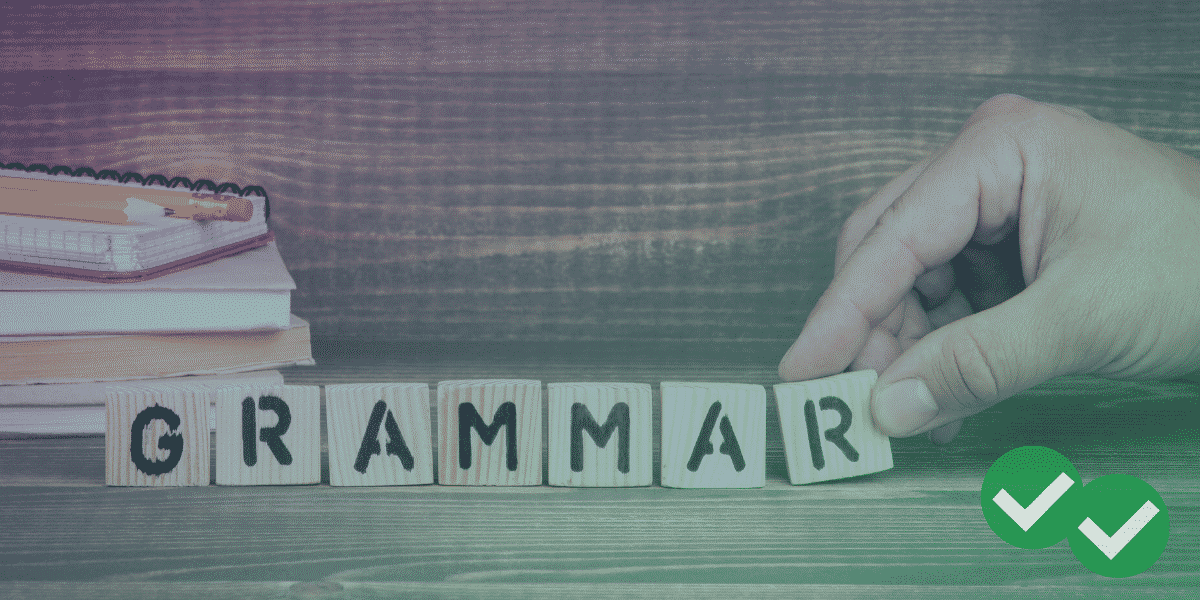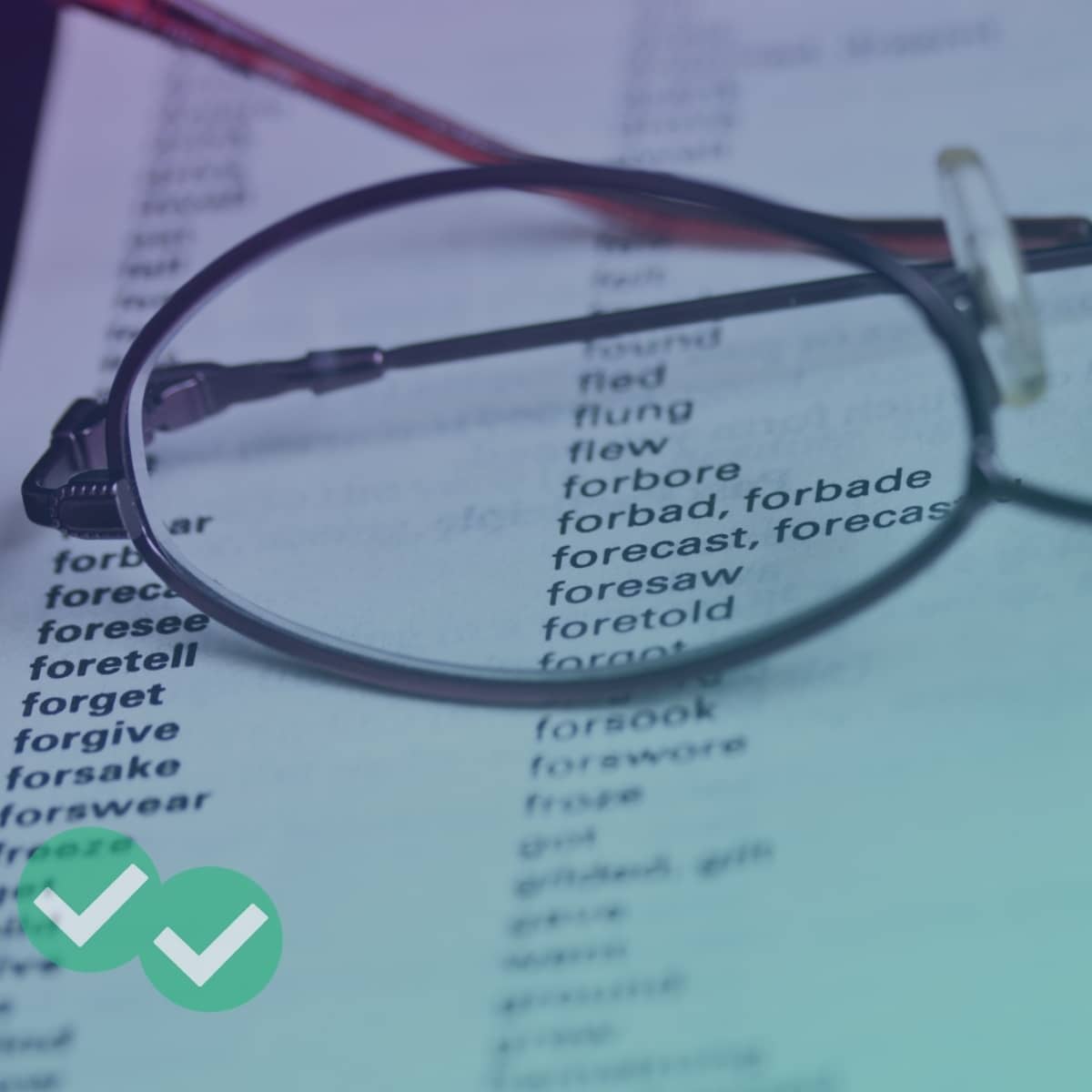
Learning English grammar can feel scary, especially if it is not your first language. Whether you’re learning English as a second language or simply want a refresher course on the basics, you will need to understand and learn English grammar.
Thankfully, learning English grammar doesn’t need to feel like a chore, and it’s actually much simpler than most people realize. That’s why we’ve devised this useful grammar guide on how to learn English grammar in 5 easy steps!
Learning English Grammar
The great thing about learning English grammar is that you don’t have to start with the most complex rules (in fact, you shouldn’t). After all, you’ll need to learn to walk before you can run!
So, let’s look at some basic grammar rules to get you started on your language-learning journey:
Step 1: Learn the Parts of Speech
The parts of speech are the different categories of English words. Every English word fits into a category, and the parts of speech help English speakers understand how each word can be used.
There are 8 basic parts of speech that you will need to know:
- Noun – A noun is a person, place, thing, group, idea, concept, etc….. (Ex: dog, man, Japan, house, anger, democracy)
- Pronoun – A pronoun is a word that can be used in place of a noun, to refer to it (Ex: I, you, he, she, it, we, they).
- Verb – A verb is a word used to describe an action (run, jump, eat), or a state of being (is, appears, thinks), etc….
- Adjective – An adjective is a word that describes or modifies a noun or pronoun. (Ex: strong, fast, intelligent, nice)
- Adverb – An adverb is a word that describes or modifies a verb or adjective. (Ex: slowly, exceptionally, sadly)
- Preposition – A preposition is a word that expresses the relation between two things in a sentence. (Ex: behind the door, at noon, with the man)
- Conjunction – A conjunction is a word used to connect two related parts of a sentence. These parts can be clauses (I want to play baseball, but it is raining), or smaller parts of speech such as adjectives, adverbs, nouns, verbs, etc… (fancy and expensive, silently but powerfully, kicking and screaming).
- Interjection – An interjection is a word or phrase that expresses meaning without the need for a complete sentence. (Ex: wow, oh, ouch)
Step 2: Learn New Vocabulary
Once you understand the eight basic parts of speech, you can begin to expand your vocabulary. This is one of the most important steps toward learning English grammar. Before you break out your English dictionary, you will need to understand the parts of speech.
Below, you will find examples of some common words in the English language, divided into their respective parts of speech:
Nouns
Nouns can also be subdivided into two distinct groups: proper nouns and common nouns. Generally, proper nouns are capitalized and common nouns are not. A proper noun is the name of a specific group, person, place, thing, or idea (United Nations, Australia, Brad Pitt, The Declaration of Independence). Alternatively, a common noun refers to less specific things (animal, table, city, meeting, man).
- Person – Barack Obama, woman, boy
- Place – Japan, school, kitchen
- Thing – Dog, bridge, desk
- Group – Family, team, government
- Idea – Courage, anger, feeling
Pronouns
Though there are many different types of pronouns, there are a few types that are very important for English beginners: Personal, Demonstrative, and Possessive Pronouns. Here are a few examples of each:
- Personal Pronoun – A word that represents a person, group, or thing(s).
- I, You, He, She, We, They, It
- Demonstrative Pronoun – A word that points to specific things in regard to their quantity and proximity to the speaker.
- This, That, These, Those
- Possessive Pronoun/Possessive Adjective – A word that shows ownership of a thing.
- My, Mine, Your, Yours, His, Her, Hers, Our, Ours, Their, Theirs, Its
Verbs
Much like nouns, verbs can be subdivided into two important categories: stative verbs and active verbs. Stative verbs are used to describe the state of being, appearance, or other characteristics of the subject (the flower smells nice, he is from England, she understands the question). Alternatively, active verbs describe actions or occurrences (she is studying English, we’re having lunch, they’re looking for books). Additionally, while active verbs can be used in the continuous tense, stative verbs cannot.
- Eat
- Sleep
- Drive
- Walk
- Think
- Ask
- Work
- Try
- Leave
- Call
Adjectives
Many adjectives can be identified by their prefixes and/or suffixes. These prefixes and suffixes can help language learners extract meaning.
A few examples include prefixes that all signify opposition or “not,” like unlikely, impossible, irreverent, illogical, non-participant, and disloyal. Similarly, there are a few suffixes that signify certain meanings, like colorful (“full of”), homeless (“without”), countable (“can be”).
This rule typically doesn’t apply to shorter adjectives (see examples below):
- Happy
- Sad
- Good
- Bad
- New
- Old
- Long
- Short
- Big
- Little
An “article” is an important kind of adjective that acts differently than other adjectives. Articles always come before the noun that they modify. There are only 3 articles in the English language:
- A – Indicates a singular noun that begins with a consonant (Ex: a dog, a tree, a feeling)
- An – Indicates a singular noun that begins with a vowel (Ex: an apple, an eye, an eagle)
- The – Indicates a specific singular noun that can be either common or proper (Ex: the ocean, the government, the United States)
Adverbs
Many adverbs end in -ly, though this is not always the case. Some words that end in -ly are not adverbs, and some adverbs have a different ending entirely. Here are a few of the most common adverbs:
- Quickly
- Slowly
- Usually
- Poorly
- Well
- Quietly
- Loudly
- Perfectly
- Badly
- Never
- Always
Prepositions
Prepositions can describe three types of relations: temporal (time), spatial (space), and conceptual. Here are a few examples:
- Temporal Prepositions
- After, when, while, before, once, ago, by, since, during, until
- Spatial Prepositions
- Under, over, below, between, beside, In front of, behind
- Conceptual Prepositions
- Concerning, about, regarding
Conjunctions
Conjunctions are generally used to complete a list or connect separate clauses. Here are a few examples:
- But
- And
- Or
- Yet
- Because
- Although
- While
Interjections
Interjections are exclamations that express a certain feeling or sentiment without the need for a verb. While they are important to learn, interjections are generally reserved for informal/casual English. Here are a few examples:
- Oh.
- Wow!
- Ouch!
- Oops.
- Great!
- Nice!
- Congratulations!
Step 3: Learn Sentence Structures
While there are some exceptions (like interjections), the majority of English sentences must have a subject and a verb. The subject is a noun that is doing the acting. The verb is the action that the noun is doing. Here are a few examples to illustrate the subject-verb rule:
- The dog barks.
- A baby cries.
- The bird sings.
Without a subject AND a verb, none of these sentences would make sense. In fact, they wouldn’t be sentences at all!
English Word Order
Figuring out the word order is easy enough when a sentence only has a subject and a verb, but it gets more complicated when you start adding more words. The standard word order in English is: Subject + Verb + Object. An object is the thing that is being acted upon by the subject. Here are a few examples of basic subject/verb/object sentences:
- The man calls his friend.
- The dog chews on the bone.
- The bird flies over a tree.
With simple sentences like these, figuring out the word order is pretty easy. The article (a, an, or the) comes before the noun it is describing, the noun comes before the verb, and the verb comes before the object.
Let’s keep adding more words to test it out!
- The angry man impatiently calls his friend.
- The big dog always chews on the bone.
- The little bird quickly flies over a tree.
In the examples above, we’ve added an adjective and an adverb to each sentence. Generally, adjectives come after the article and before the noun they are describing, though there are many exceptions.
Step 4: Learn Clauses
In order to understand and form more complex sentences, you will need to learn about English clauses. A clause is a phrase that forms a complete thought using a subject and a verb. Every sentence must include at least one clause.
Common English Clauses
There are two types of clauses that you’ll need to know in order to form more complex sentences: Independent Clauses (or Main Clauses) and Subordinate Clauses. Here are a few examples of each:
- Independent Clause – An independent clause can stand alone as a complete sentence. Sentences can be made up out of one clause (Ex: My dog eats pizza). However, sometimes we can see two or more independent clauses in a sentence:
- I like music, but I don’t like this song. (2 independent clauses combined by a conjunction, “but”)
- After we finished dinner, I decided to get some dessert. (One subordinate clause, followed by an independent clause)
- Subordinate Clause – A subordinate clause cannot stand alone (it requires an independent clause). You can recognize subordinate clauses because they have subordinate conjunctions in front of them (Ex: although, after, before, because, etc). These sentences have subordinate clauses (in italics):
- I answered the phone when it rang.
- He doesn’t like me because I took his pencil.
- She raised her hand as soon as the teacher asked the question.
Clauses help organize the words in a sentence into separate sections, each with their own role within the sentence. Once you understand how each phrase or clause functions in a sentence, you can begin to understand why words are arranged in a particular order.
Now there’s only one step left to help you learn English grammar!
Step 5: Learn English Grammar Tenses
A tense expresses the time in which a sentence takes place. Verb tenses change the form a verb takes in every sentence.
There are three basic tenses in English: Past, Present, and Future. Each tense has 4 subcategories: Simple, Continuous, Perfect, and Perfect Continuous.
Before we take a look at each of the 12 English tenses, it is important to note that the active and passive voice can also affect the form that a verb takes.
Present Tense
The present tense is generally the first tense that you will learn, as it is used to describe the current moment. Here are a few examples of the present tense in all its forms:
- Simple Present Tense
- The rabbit eats a carrot.
- I am an American.
- They like hamburgers today.
- Present Continuous Tense
- I am running now
- She is going to school today.
- They are throwing the ball.
- Present Perfect Tense
- The man has played baseball before.
- I have seen the movie already.
- We have been to the park recently.
- Present Perfect Continuous Tense
- The man has been playing baseball.
- I have been watching my friend.
- We have been taking care of my sister this afternoon.
Past Tense
The past tense is important for telling stories or recounting events that occurred in the past. Here are some basic examples:
- Simple Past Tense
- The cat ate a mouse yesterday.
- I was a smoker a few years ago.
- They liked the pizza.
- Past Continuous Tense
- I was walking.
- She was leaving for work this morning.
- They were playing tennis last week.
- Past Perfect Tense
- The man had worked at the company for years.
- I had seen the show before.
- We had been to the swimming pool.
- Past Perfect Continuous Tense
- The man had been playing basketball.
- I had been playing with my friend.
- We had been taking care of my brother.
Future Tense
The future tense is used to talk about things that have not happened yet, but will likely happen in the future. Here are a few basic examples:
- Simple Future Tense
- The lion will eat the zebra soon.
- I will go to college next year.
- They will enjoy the movie tomorrow.
- Future Continuous Tense
- I will be seeing my family during summer vacation.
- She will be going to the bank this afternoon.
- They will be spending time together later.
- Future Perfect Tense
- The man will have gone to school.
- I will have seen the episode by then.
- We will have been to the grocery store.
- Future Perfect Continuous Tense
- The man will have been playing soccer.
- I will have been singing with my friends.
- We will have been looking after my cousin.
Additional Resources to Learn English Grammar
There you have it! While this guide does not cover every grammar rule on the books, it should provide you with enough to understand the basics of English grammar.
For more advanced grammar rules, you can also check out our articles on conditionals, the subjunctive mood, and phrasal verbs.
In any case, we hope this guide helps you improve your English grammar and feel more comfortable speaking English with others! Do you still have some grammar questions? Here are a few additional resources to help you with your daily grammar studies:






Leave a Reply